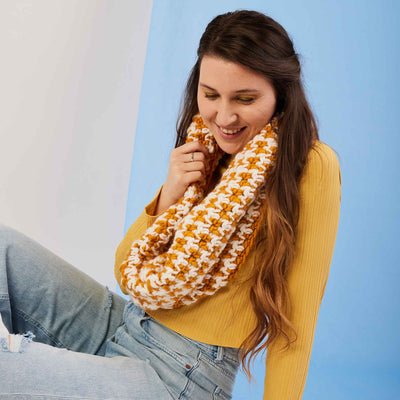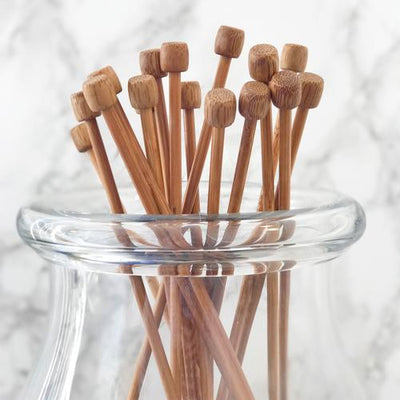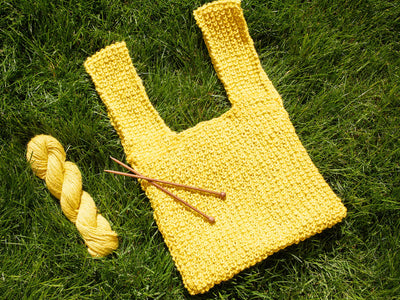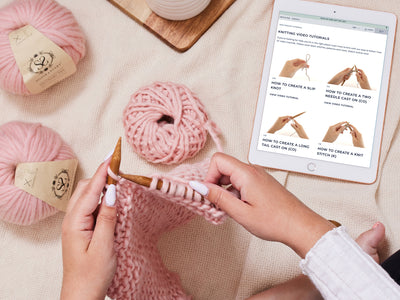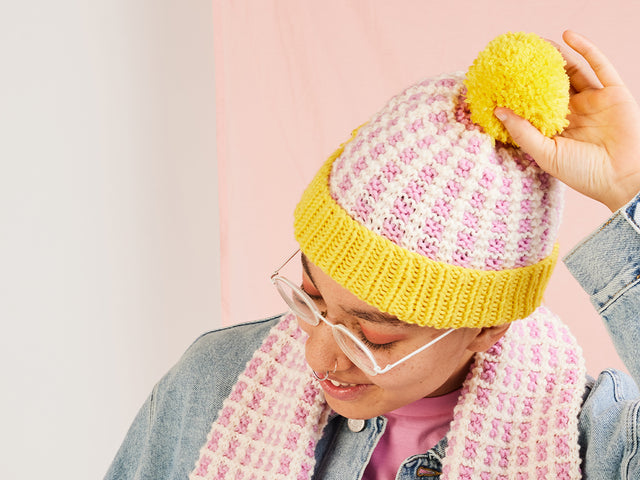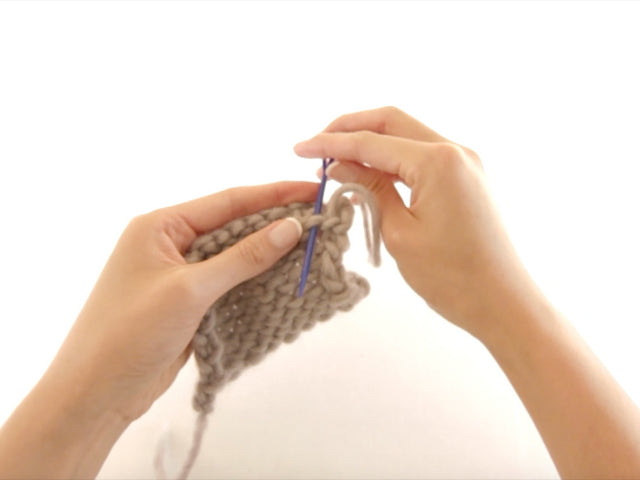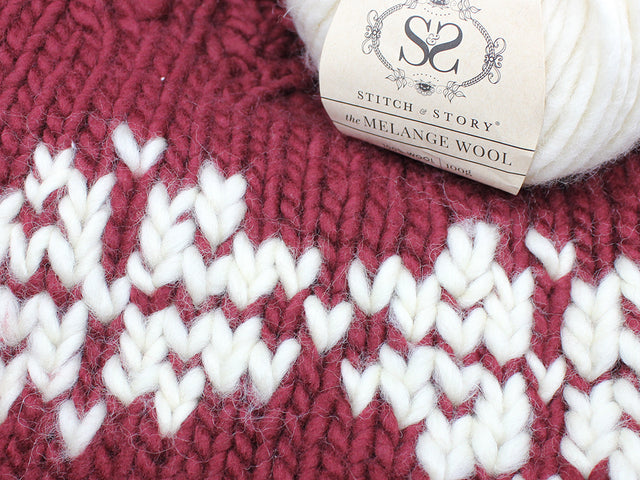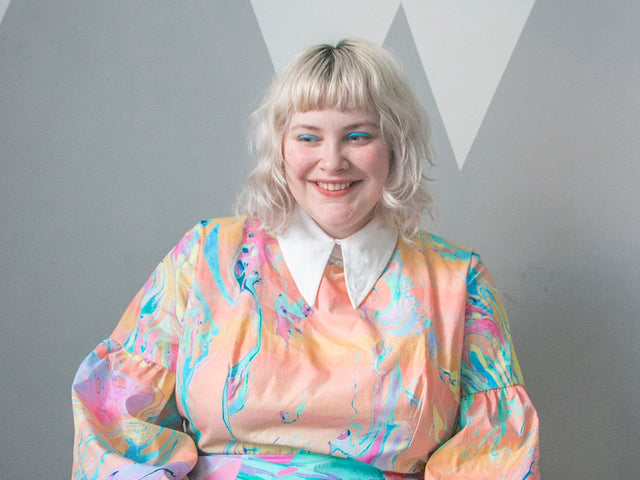
Understanding Knitting Needle Sizes & Yarn Weights
Knitting | 4 min read time
Find out more about why the yarns you choose, and the needles you use, matter!
What does yarn weight mean?
Yarn ‘weight’ refers to the thickness of the yarn strand. The four most popular yarn weights are DK (which stands for double knit), aran/worsted weight, chunky/bulky, and super chunky/super bulky.

What are the different types of knitting needles?
There are 3 main types of knitting needles, each are suited to different types of projects or techniques:
Straight needles (also known as single-pointed needles)
 |
These needles are possibly the ones people are most familiar with when they think of knitting. They come in sets of two, one held in each hand, and have a point at one end and a stopper at the other. Straight needles are perfect for beginners, as they are straightforward and easy to use. They come in a variety of materials such as plastic, metal, and wooden, and can be used on projects that are worked flat, such as scarves, and panels for sweaters and cardigans.
Circular needles
 |
| Shop now - 10mm circular knitting needles |
These needles are connected end-to-end by a flexible cord, making them almost like one long knitting needle. The needles can be bought either attached to the cord (fixed circular needles), or separate to the cord, allowing you to attach different needle sizes to a cord (interchangeable needles). As the name suggests, circular needles are used when knitting a project in the round, such as hats, snoods, or even sweaters. They can also be used the same as straight needles by working back and forth without joining your stitches to form a circle. This is particularly useful if you are working on a larger project that can get quite heavy, as you won’t need to hold the weight of your project on two needles.
Double pointed needles (also known as DPNs)
These are shorter, straight needles with a point at both ends. They usually come in sets of four to six needles, and are perfect for knitting smaller projects in the round, such as socks, or the sleeves of sweaters and cardigans.

What are knitting needle sizes?
Knitting needle sizes come in lengths, and diameters. The diameter sizes are generally given in mm (eg. 4mm) which refers to the thickness of the needles. The higher the number, the thicker the needles, so 10mm needles are thicker than 7mm needles. Knitting needle lengths are measured in cm: Straight needles range from short needles (10cm), to standard needles (25cm), and long needles (35cm). Circular needle tips tend to be around 15cm in length, but the length of the cord that joins them can vary, making circular needles available in a broad range of lengths!
Which needle size is right for my yarn?
Each yarn will have a recommended knitting needle size to be used with it, depending on the yarn weight. The thicker the yarn, the larger the needle size you will need to use with it. For example most DK yarns recommend 4mm needles, whereas chunky yarns use size 6-7mm. On the yarn band of every yarn it will give you the recommended needle size for that specific yarn – remember to check this as not all yarns of the same weight will recommend the same size needles.
Why does needle size matter?
Although yarn manufacturers give you a recommended needle size for every yarn, this isn’t set in stone. Using a larger needle size than suggested will give you looser, more open stitches, as well as making your finished piece larger. Using a smaller needle size will give you tighter, denser stitches, and your finished piece will end up being smaller. Here you can see the same yarn has been knitted with three different needle sizes, giving three very different end results.

The Chunky Wool knitted on (from top to bottom) 15mm, 10mm, and 5mm knitting needles.
There are times when you will intentionally use smaller or larger needle sizes than what’s recommended, such as;
- When you need to match tension for a swatch. Some patterns will ask you to knit a sample swatch to ensure your tension matches that of the pattern author eg. 20 stitches and 15 rows should measure 10x10cm. If your swatch ends up larger than this you would go down a needle size, and if it is smaller you would go up a needle size to allow you to match their tension.
- Trying to create a specific effect with your project. For example, if you’d like to knit a scarf and wanted a very loose, open fabric, you could use needles that are larger than the yarn recommends.
 |
 |
How to substitute yarns
Knitting patterns will usually list a specific yarn brand to use, but there may be times when you wish to substitute yarn. Usually you will substitute like for like - so if a pattern calls for a DK yarn you will substitute for another DK weight yarn. However, occasionally you may wish to use a different weight yarn than what the pattern suggests. When changing yarn weight it’s important to note that;
- When you change your yarn weight, you will also need to change needle size to one that works with your new yarn.
- Using a different yarn weight and needle size will affect the size of your finished piece. A thicker yarn with larger needles will mean the finished item will be larger, and a thinner yarn and smaller needles will mean it’s smaller. This can work well for projects like blankets or toys, where you can create smaller or larger versions without having to change the pattern. But for clothing items it can be more tricky as you may need to adjust the pattern to ensure you get a good fit.
- Changing yarn weight may also affect the functionality of your finished item. For example knitting a blanket in a super chunky yarn instead of a DK yarn will mean the blanket will be much heavier and thicker, which may not be the effect you’re looking for.
When substituting, it’s also important to check that you have enough metres or yards of the new yarn for your project, as different brands and weights of yarn will have varying lengths per ball or skein.
Remember– if you’re unsure about a yarn weight or what needle size will work best, always knit a sample swatch. It’s the best way to see how a particular yarn will work with the needles, and what the resulting stitches will look like.
What knitted creation are you working on at the moment? Share your photos with a community of crafters on Instagram and Facebook.


